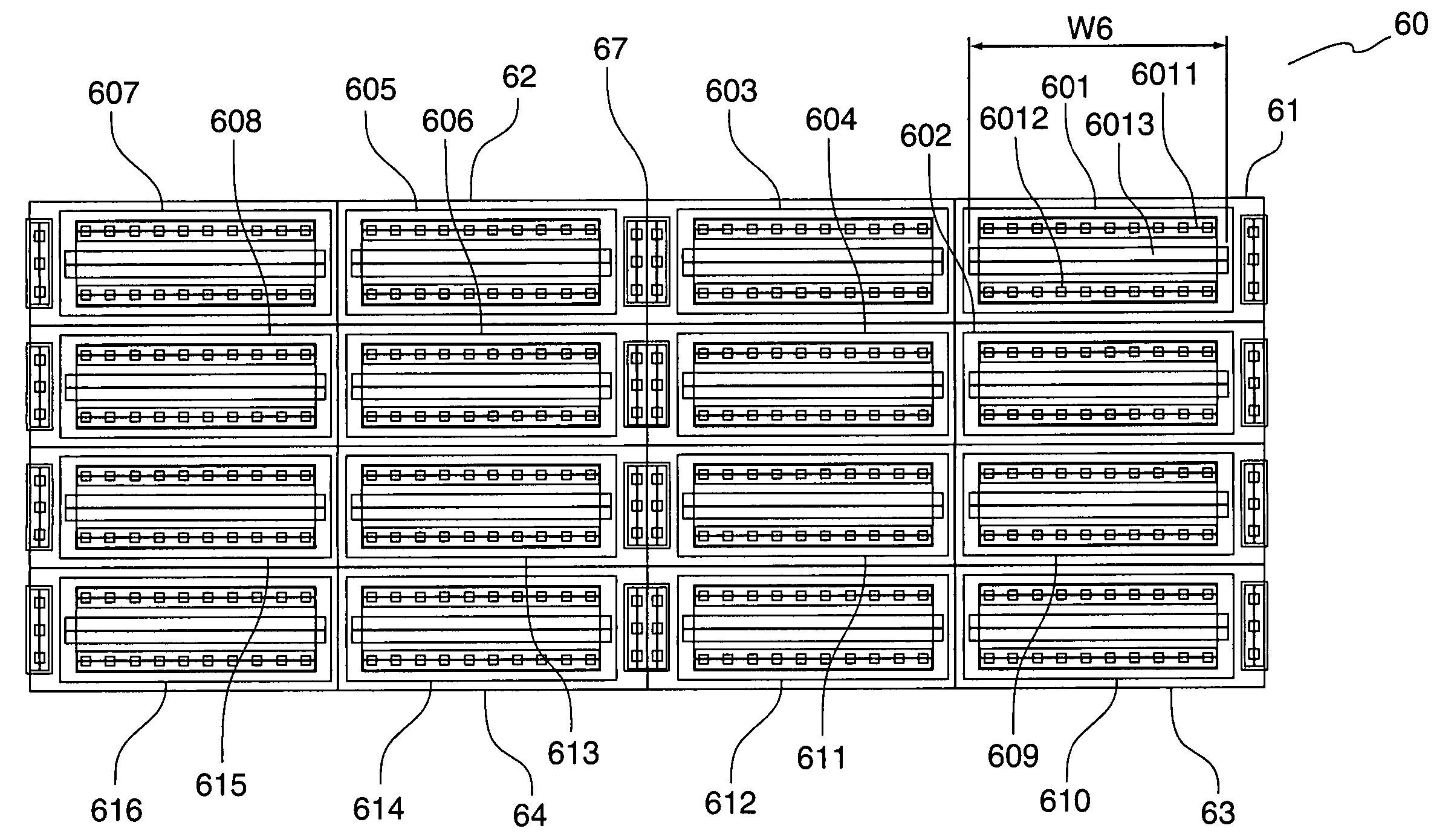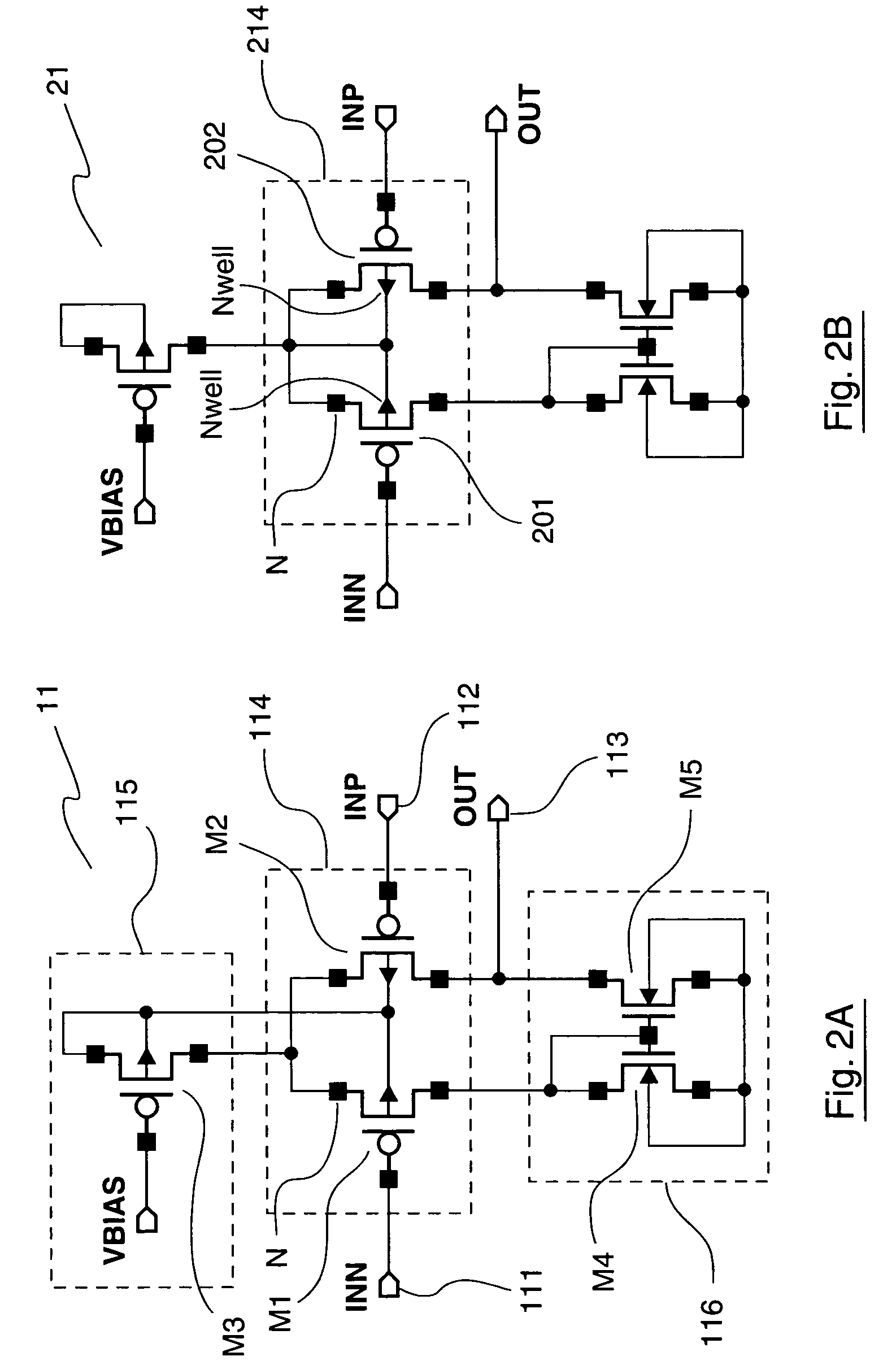Electronic circuit including at least one first and one second differential pair with the transistors sharing one and the same well
a technology of differential pair and transistor, applied in the direction of pulse generator, electric pulse generator circuit, pulse technique, etc., can solve the problems of limiting the performance of differential vco, well interfering with the operation of an amplifying stage that includes the pair, and lack of uniformity, so as to reduce parasitic capacitance and the occupied semiconductor surface in the circuit.
- Summary
- Abstract
- Description
- Claims
- Application Information
AI Technical Summary
Benefits of technology
Problems solved by technology
Method used
Image
Examples
first embodiment
[0060] A diagram is shown in relation to FIG. 6 of the topology of the transistors of a differential VCO 60 according to the invention in which the transistors are arranged as “crossed pairs”.
[0061] The VCO 60 also includes sixteen P-type MOS transistors 601 to 616, forming first 601, 605, 609, 613, second 602, 606, 610, 614, third 603, 607, 611, 615 and fourth 604, 608, 612, 616 transistors of four differential pairs 61 to 64 (the other components of the VCO 60 are not shown in this FIG. 6).
[0062] For example, the first transistor 601 of the differential pair 61 of the VCO 60 has a source 6011, a drain 6012, and a gate 6013.
[0063] Unlike the topology of the conventional differential VCO 50 (FIG. 5), in the topology according to this first embodiment of the invention, the four differential pairs 61 to 64 are manufactured in one and the same and single well 67.
[0064] In this way, this topology according to the first embodiment of the invention makes it possible to substantially re...
second embodiment
[0076] A diagram is presented in relation to FIG. 7 of the topology of the transistors of a differential VCO 70 according to the invention, in which the transistors are not arranged as “crossed pairs”.
[0077] This VCO 70 includes eight P-type MOS transistors 711, 721, 731, 741, 712, 722, 732, 742, forming first 711, 721, 731, 741 and second 712, 722, 732, 742 transistors of four differential pairs 71 to 74 (the other components of the VCO 70 are not shown in this FIG. 7).
[0078] The first 711 and second 712 transistors of the differential pair 71 of the VCO 70 each have a source 715, 716 respectively and a gate 717, 718 respectively.
[0079] In the same way as in the topology of the differential VCO 60 according to the first embodiment of the invention (FIG. 6), in the topology according to the second embodiment of the invention, the four differential pairs 71 to 74 are manufactured in one and the same and single well 76.
[0080] However, unlike the differential VCO 60 in FIG. 6, in wh...
PUM
 Login to View More
Login to View More Abstract
Description
Claims
Application Information
 Login to View More
Login to View More - R&D
- Intellectual Property
- Life Sciences
- Materials
- Tech Scout
- Unparalleled Data Quality
- Higher Quality Content
- 60% Fewer Hallucinations
Browse by: Latest US Patents, China's latest patents, Technical Efficacy Thesaurus, Application Domain, Technology Topic, Popular Technical Reports.
© 2025 PatSnap. All rights reserved.Legal|Privacy policy|Modern Slavery Act Transparency Statement|Sitemap|About US| Contact US: help@patsnap.com



